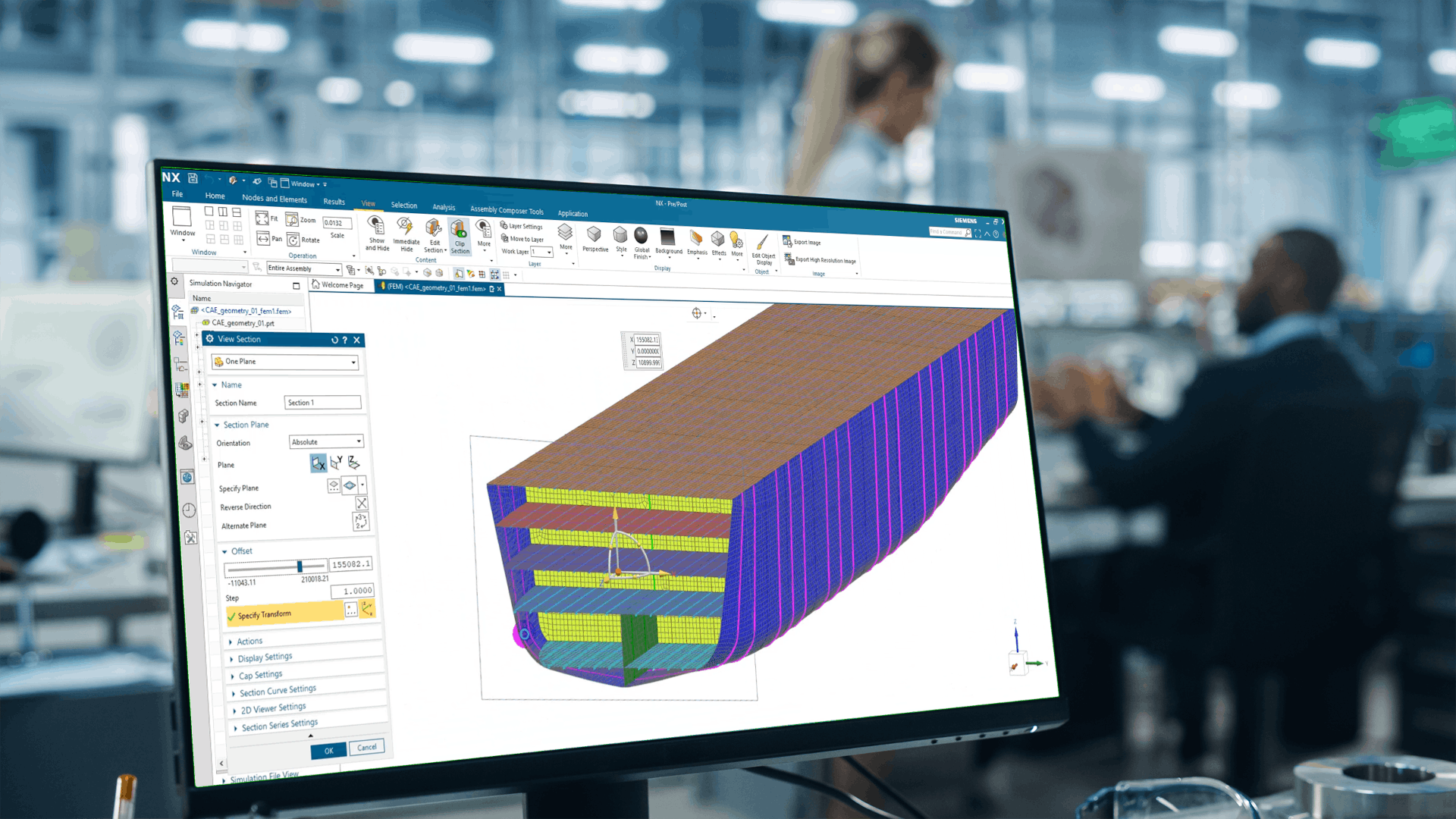Marine vessels are rapidly changing in their size and complexity. To successfully tackle this, it is essential to keep track of the structural layout of the ship and the hundreds of thousands of individual components in the design and engineering phase. Establishing integrated workflows, data management and the single source of truth CAD model is the key to deal with the complexity.
Watch this webinar to learn how you can achieve this as part of your structural performance engineering.
Gain the needed know-how
In this webinar, you will learn how to perform FEA simulations for the structural integrity assessment of marine vessels using the NX and Simcenter toolchain. You will see how CAD, CAE and data management come together to efficiently prepare a model, perform analyses and remain in sync with design to adapt to changes in the iterative engineering process. This webinar will touch on the following topics:
- Structural analysis for marine vessels
- Simcenter 3D as a simulation hub
- Finite Element model creation
- Global and local analyses in a managed environment
- Link to CAD and hydrodynamic analysis
The value of structural analysis
Together with shaping the hull, defining drag, and influencing operational costs, the structural sizing process helps to optimize the weight of the structure. On the other hand, maintaining stiffness and structural integrity influences the overall carrying capacity, material costs and operational safety.
Design, simulation and data management
Having full control and understanding of the structure is mandatory in the engineering process. Locally, the welds and "nuts and bolts" need to be dimensioned appropriately, while on a global level, the spacing of bulkheads, decks and beams must guarantee the overall stiffness. Global and local issues are interconnected and require a holistic approach.
Integrating finite element simulation with CAD and data management makes the evaluation manageable, traceable and helps to seamlessly integrate structural evaluations with the design. This way, the design changes can be associatively evaluated by self-updating models.
Watch the webinar now so you don’t miss out.
Meet the speaker

Sebastian Flock
Business Development Manager for Simcenter 3D Solutions
